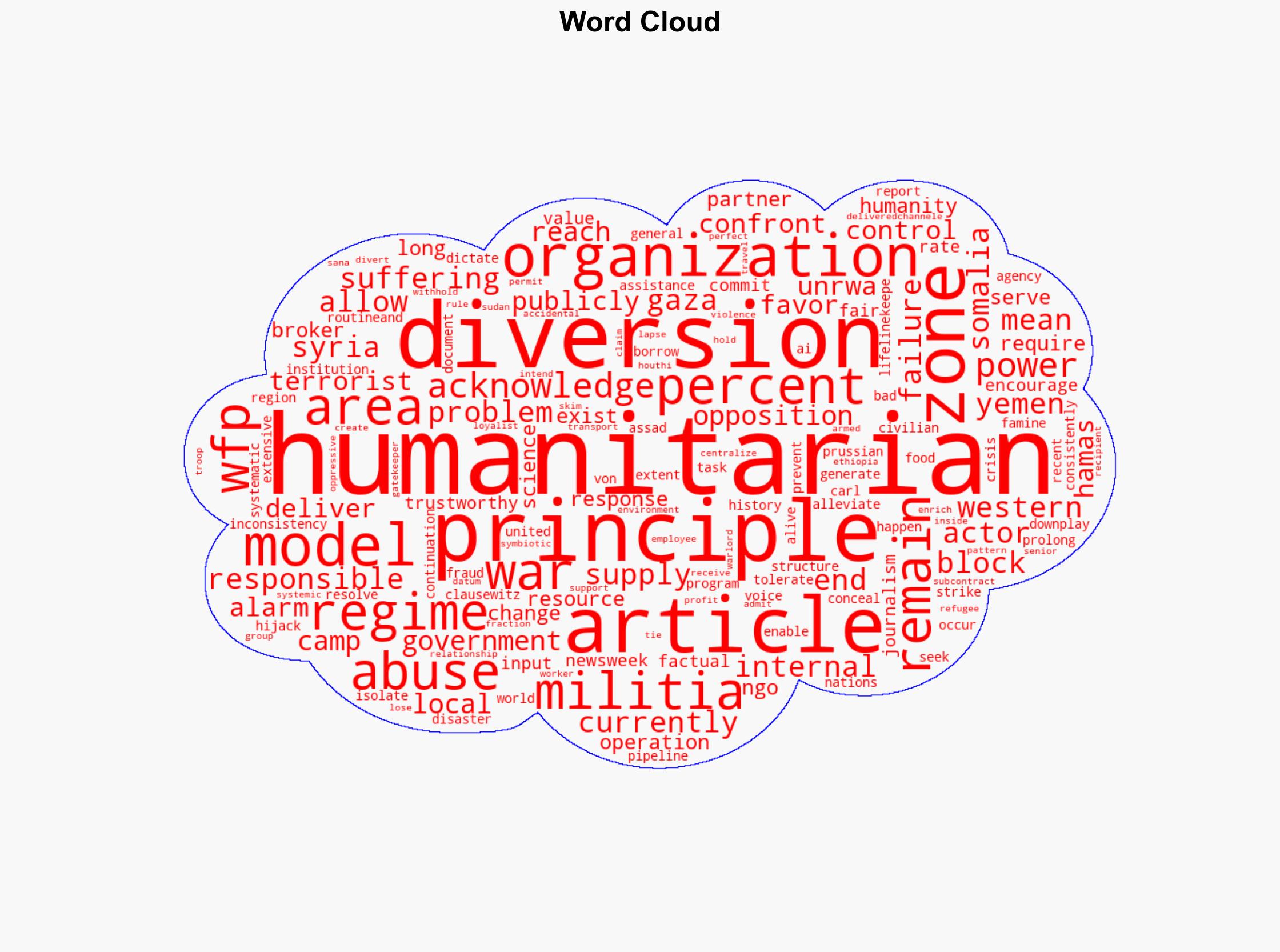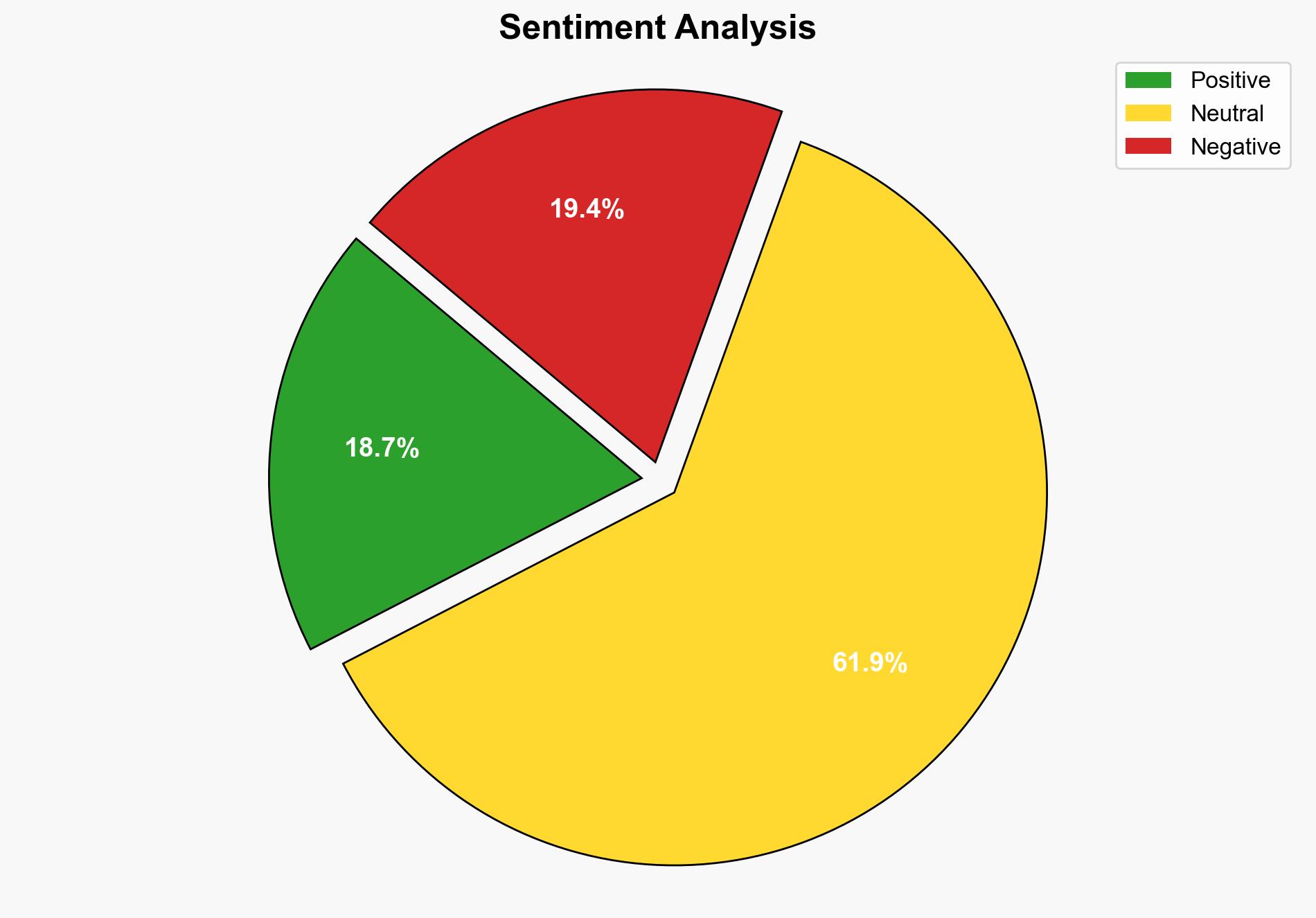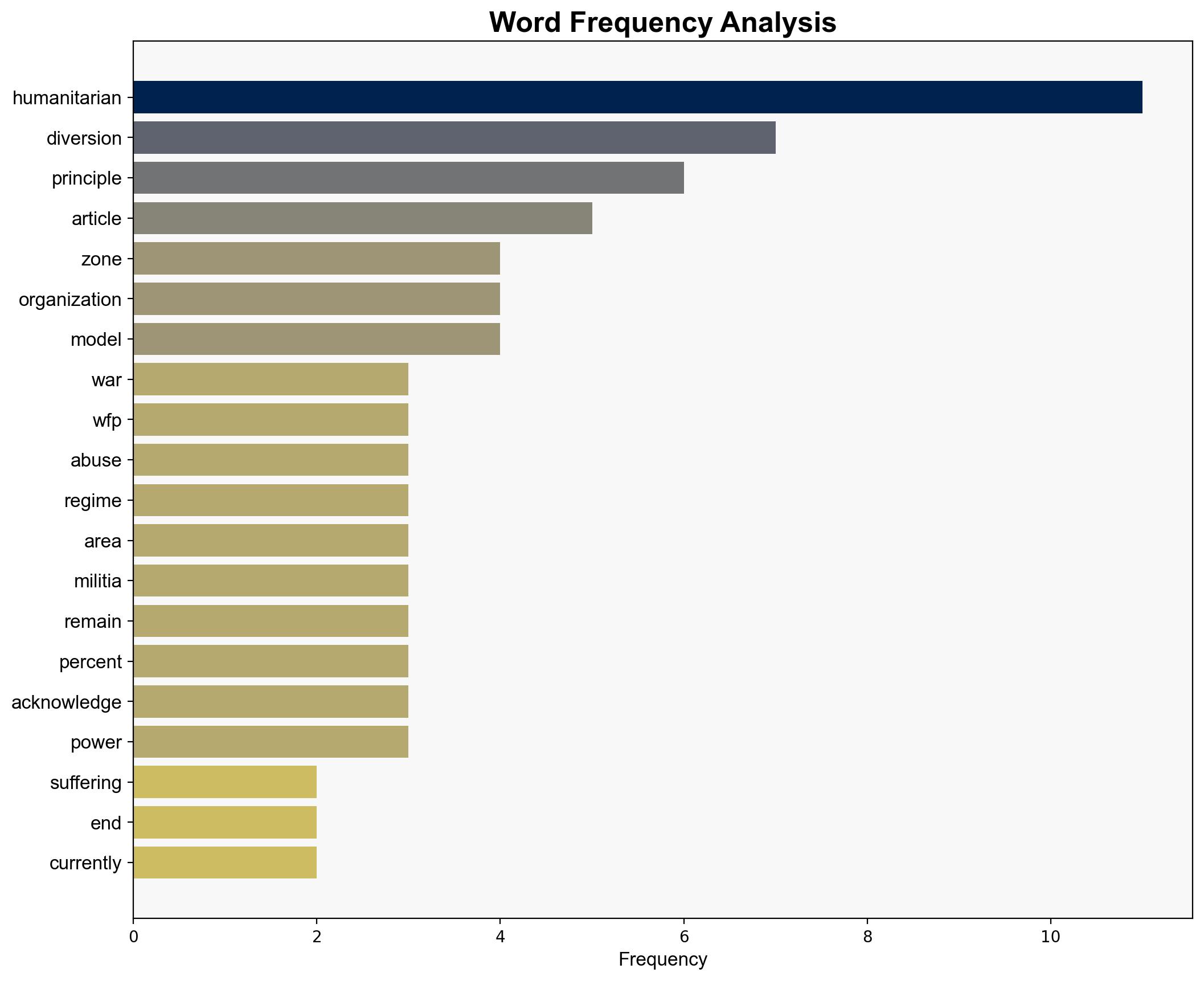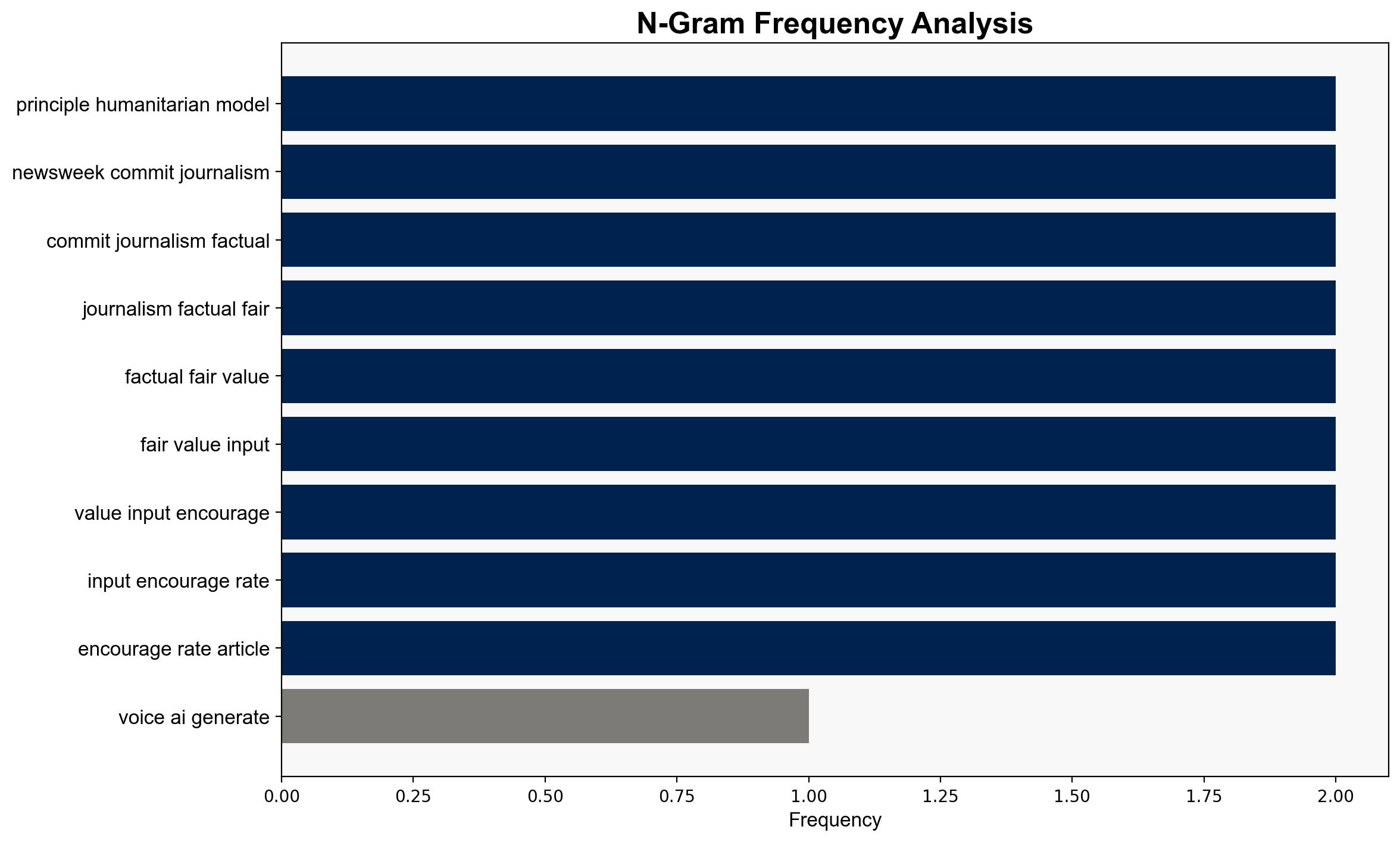How Humanitarian Aid Became a Weapon of War Opinion – Newsweek
Published on: 2025-07-10
Intelligence Report: How Humanitarian Aid Became a Weapon of War Opinion – Newsweek
1. BLUF (Bottom Line Up Front)
Humanitarian aid, intended to alleviate suffering in conflict zones, is being systematically diverted and manipulated by oppressive regimes, militias, and terrorist organizations. This exploitation undermines aid effectiveness and prolongs conflicts. Key recommendations include enhancing transparency, enforcing accountability, and revising aid distribution models to prevent misuse.
2. Detailed Analysis
The following structured analytic techniques have been applied to ensure methodological consistency:
Causal Layered Analysis (CLA)
– **Surface Events**: Aid diversion in Syria, Yemen, Somalia, and Gaza.
– **Systemic Structures**: Centralized control by regimes and militias, lack of oversight by aid organizations.
– **Worldviews**: Aid as a tool for political leverage rather than humanitarian relief.
– **Myths**: Perception of aid as inherently neutral and beneficial.
Cross-Impact Simulation
– Aid diversion impacts regional stability by empowering oppressive regimes and prolonging conflicts.
– Neighboring states may face increased refugee flows and security challenges.
Scenario Generation
– **Best Case**: Reformed aid distribution models ensure transparency and accountability, reducing diversion.
– **Worst Case**: Continued exploitation of aid exacerbates conflicts and humanitarian crises.
– **Most Likely**: Incremental improvements in oversight, but systemic challenges persist.
3. Implications and Strategic Risks
– **Political**: Aid diversion strengthens authoritarian regimes and undermines international diplomatic efforts.
– **Economic**: Misuse of aid funds diverts resources from legitimate humanitarian needs.
– **Military**: Empowered militias and regimes pose increased security threats.
– **Cross-Domain Risks**: Prolonged conflicts may lead to regional instability and increased terrorism.
4. Recommendations and Outlook
- Enhance transparency and accountability in aid distribution through independent audits and monitoring.
- Partner with local entities capable of providing oversight and ensuring aid reaches intended recipients.
- Implement stricter penalties for aid diversion to deter misuse.
- Scenario-based projections:
- **Best Case**: Strengthened oversight leads to reduced diversion and improved aid effectiveness.
- **Worst Case**: Continued exploitation results in further destabilization and humanitarian crises.
- **Most Likely**: Gradual improvements with persistent challenges in high-risk areas.
5. Key Individuals and Entities
– Carl von Clausewitz (referenced for strategic context)
– Alex de Waal (cited for analysis on humanitarian aid dynamics)
6. Thematic Tags
national security threats, humanitarian aid, conflict zones, aid diversion, regional stability




